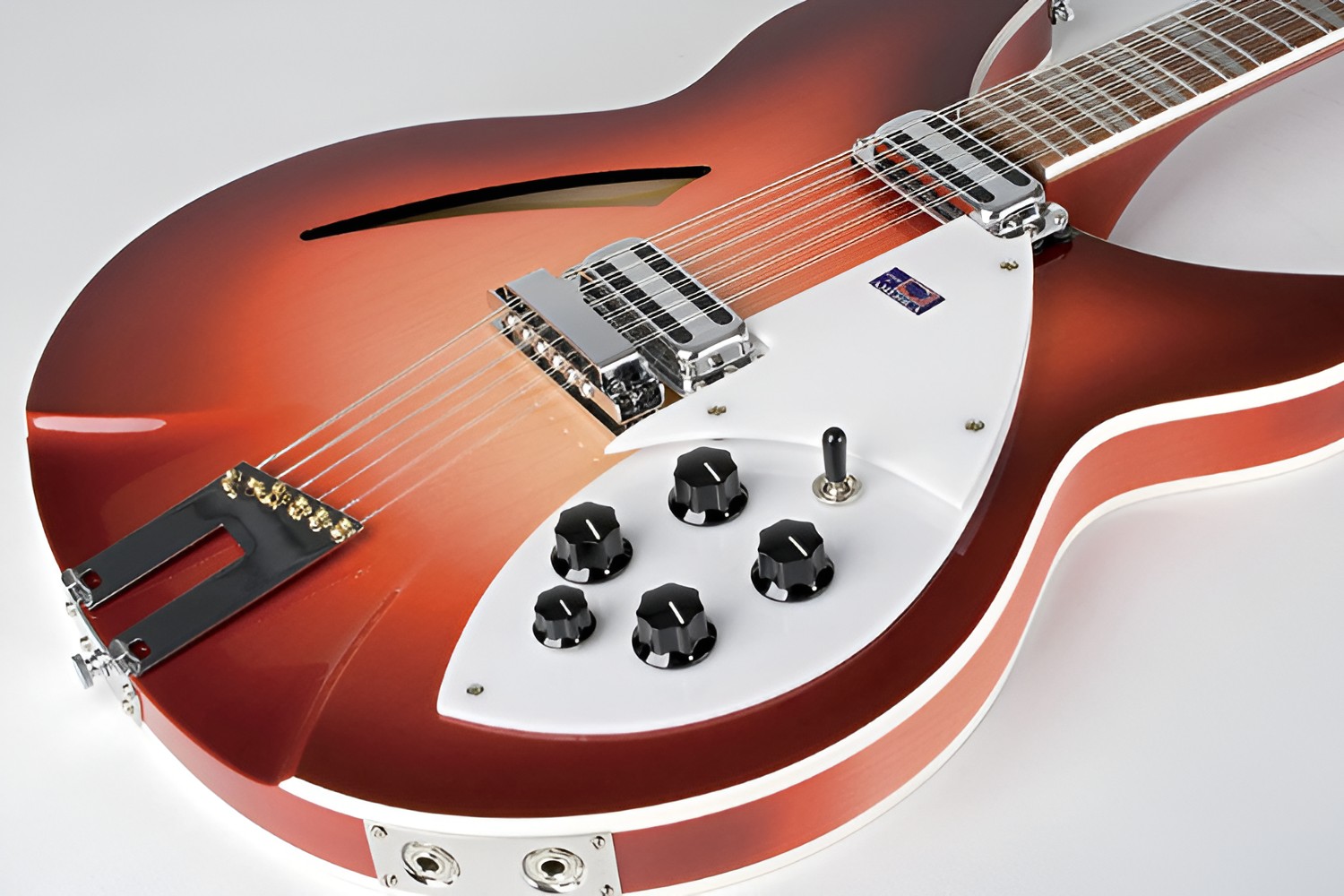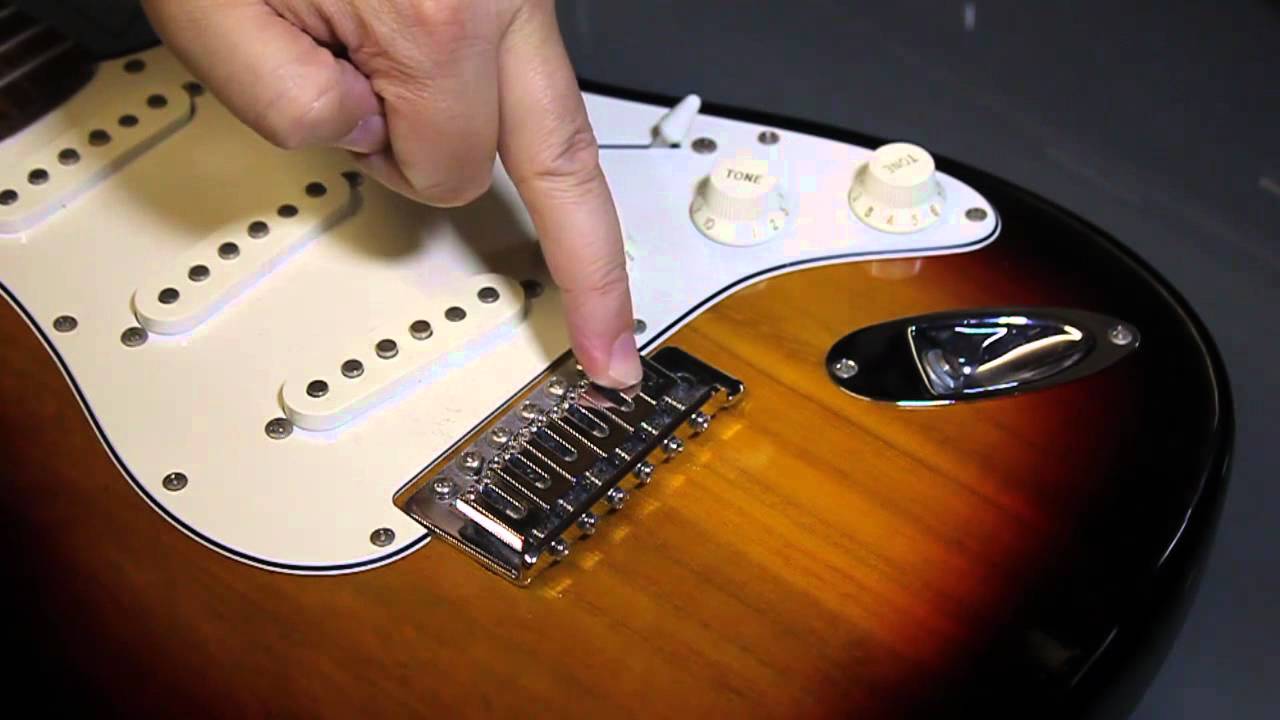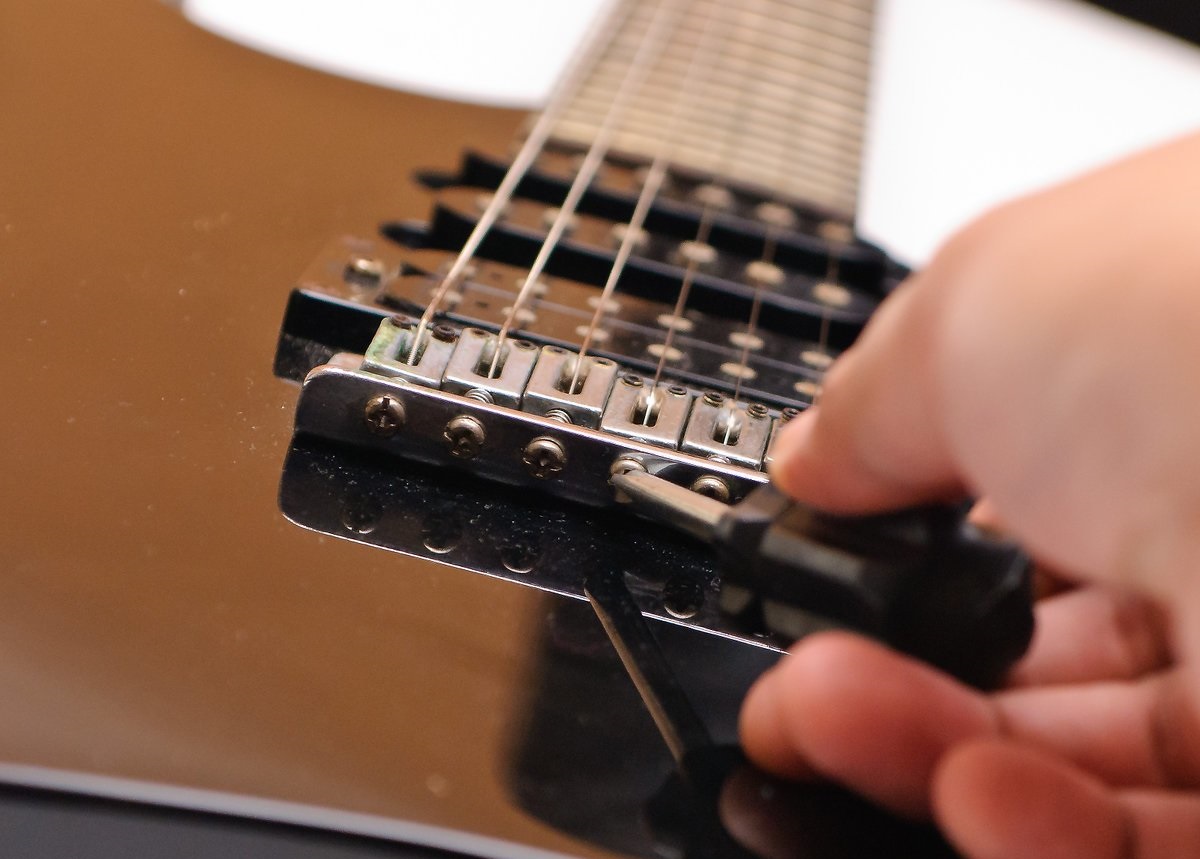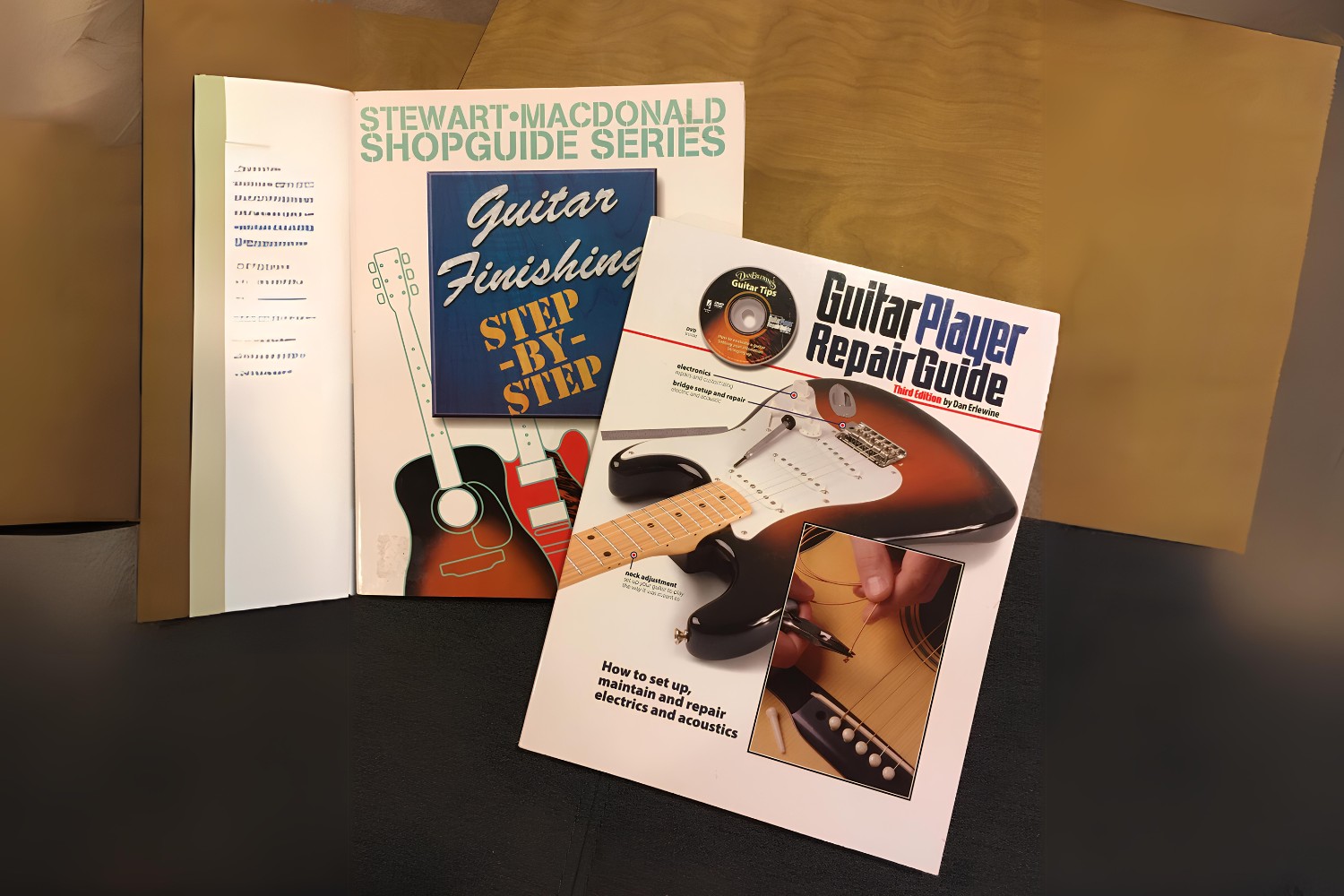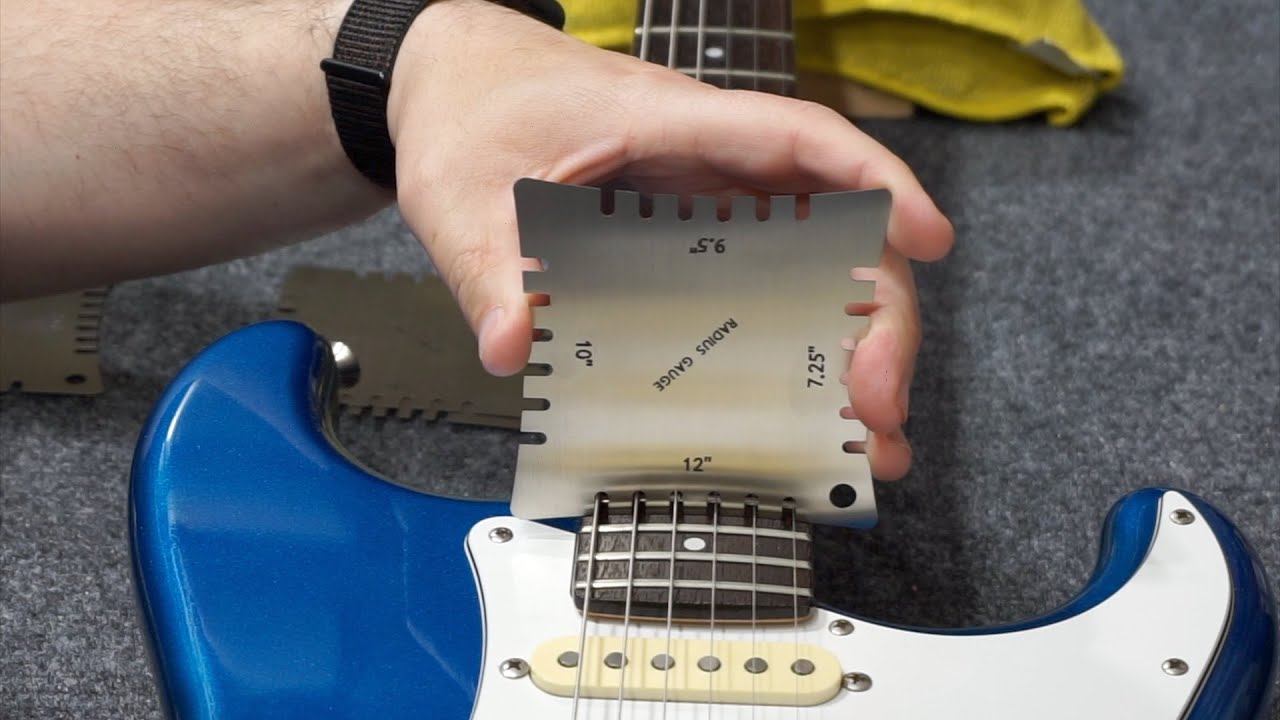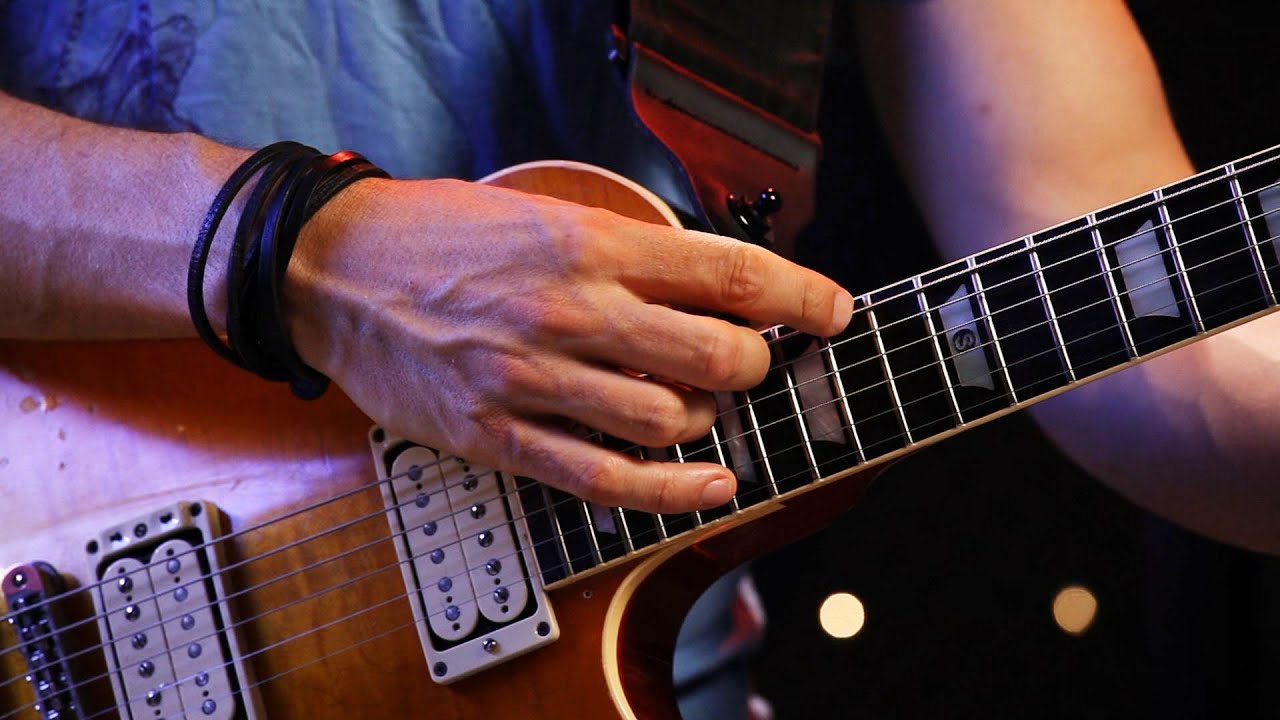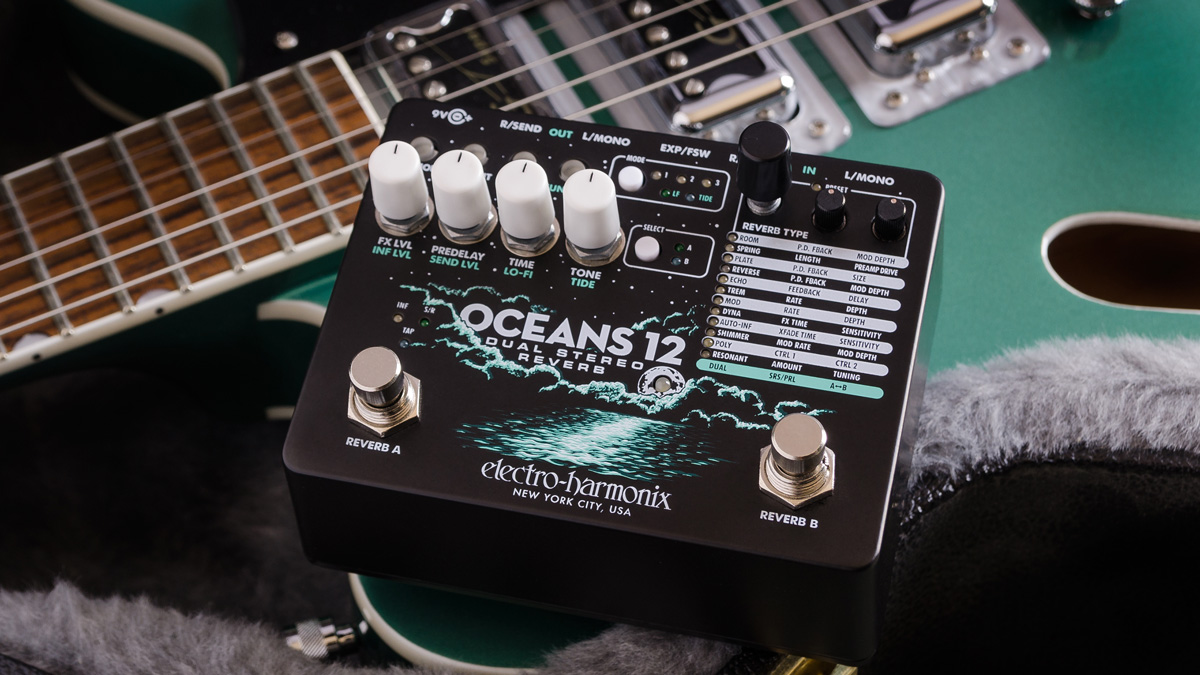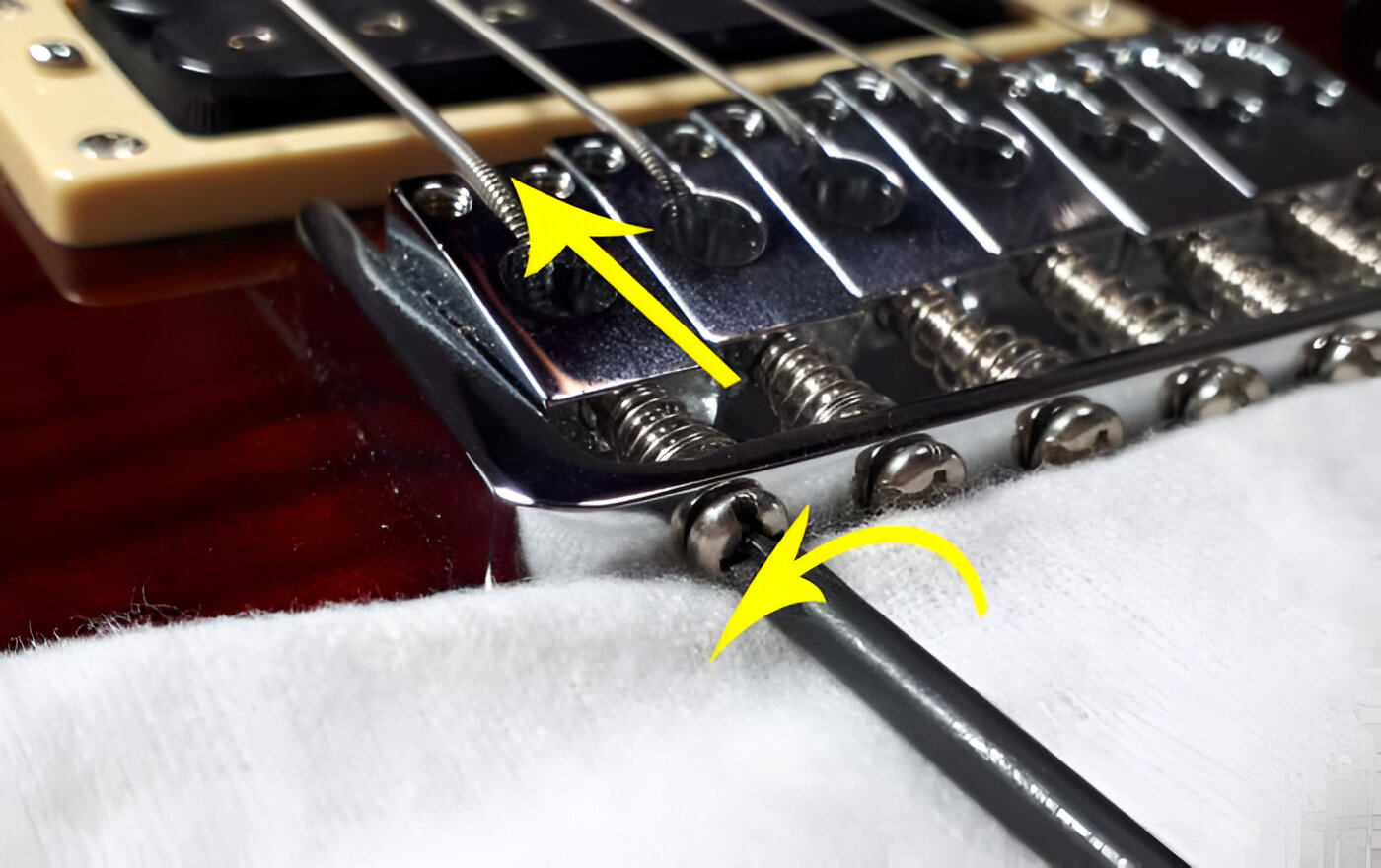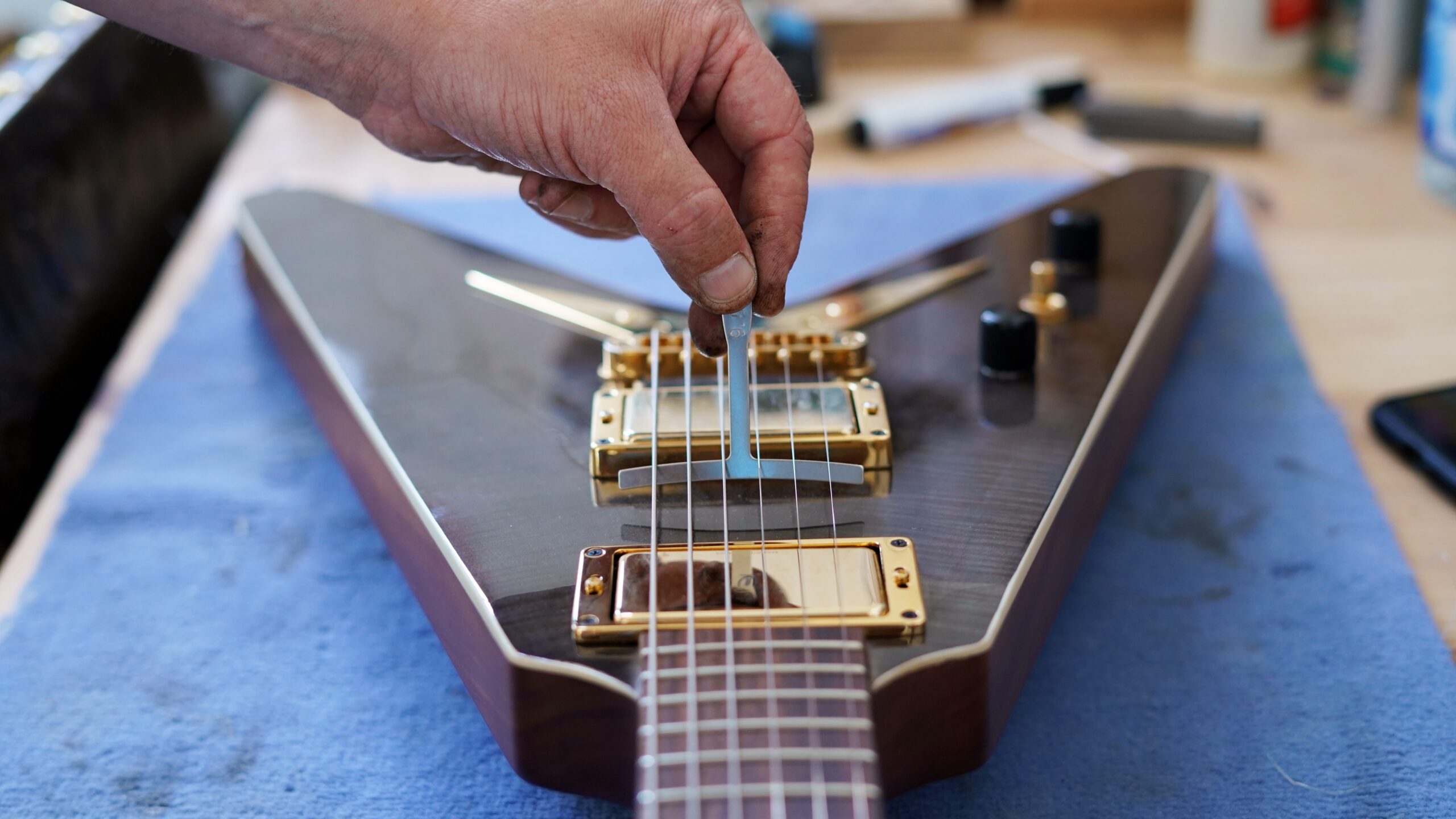Introduction
So, you've decided to take on the challenge of playing a 12-string electric guitar. Congratulations! This unique instrument offers a rich, resonant sound that can add depth and texture to your music. Whether you're a seasoned guitarist looking to expand your sonic palette or a beginner eager to explore new musical horizons, the 12-string electric guitar presents an exciting opportunity to unleash your creativity.
Playing a 12-string electric guitar is a distinctive experience that differs from playing a standard 6-string guitar. The doubled strings create a lush, shimmering tone that can elevate your playing to new heights. However, mastering this instrument requires a unique approach and a solid understanding of its nuances.
In this comprehensive guide, we'll delve into the world of 12-string electric guitars, covering everything from selecting the right instrument to mastering essential playing techniques. You'll learn about the intricacies of tuning, explore common chord progressions and riffs, and discover how to properly maintain and care for your 12-string electric guitar.
Whether you're drawn to the jangly sounds of folk and rock music or the ethereal tones of dreamy, atmospheric compositions, the 12-string electric guitar can serve as a versatile tool for expressing your musical vision. With dedication, practice, and a willingness to embrace the unique challenges and rewards of this instrument, you'll be well on your way to unlocking the full potential of the 12-string electric guitar. So, let's dive in and explore the captivating world of 12-string electric guitar playing!
Choosing the Right 12-String Electric Guitar
When embarking on your journey to master the 12-string electric guitar, selecting the right instrument is a crucial first step. With a wide array of options available, it’s essential to consider several factors to ensure that you find a guitar that suits your playing style and musical preferences.
First and foremost, consider the genre of music you intend to play. Different 12-string electric guitars are designed to excel in specific musical styles, so identifying your preferred genre can help narrow down your choices. For example, if you’re drawn to the jangly, folk-inspired sounds of artists like The Byrds or Tom Petty, you might lean towards a guitar with a bright, chiming tone. On the other hand, if you’re aiming for a heavier, more aggressive sound reminiscent of bands like Led Zeppelin or Rush, you might opt for a guitar with a thicker, more powerful tonal character.
Additionally, pay close attention to the build quality and craftsmanship of the guitar. A well-constructed instrument can significantly impact playability, tone, and overall enjoyment. Look for solid construction, smooth fretwork, and reliable hardware to ensure that your guitar will withstand the rigors of regular playing and performance.
Furthermore, consider the scale length of the guitar, as this can influence the feel and tension of the strings. A longer scale length can offer enhanced clarity and sustain, while a shorter scale length may provide a more comfortable playing experience, especially for those with smaller hands.
Finally, don’t overlook the aesthetic appeal of the guitar. Finding an instrument that resonates with you visually can inspire creativity and a deeper connection to your music. Whether you prefer a classic, vintage-inspired design or a sleek, modern aesthetic, choosing a guitar that speaks to your personal style can enhance your playing experience.
By carefully considering these factors and taking the time to explore different options, you can find a 12-string electric guitar that not only meets your practical needs but also resonates with your artistic sensibilities. Armed with the right instrument, you’ll be well-equipped to embark on your 12-string electric guitar journey with confidence and enthusiasm.
Tuning Your 12-String Electric Guitar
Tuning a 12-string electric guitar is a critical aspect of achieving the lush, resonant sound that defines this instrument. With twice the number of strings as a standard guitar, the tuning process can seem daunting at first. However, with the right approach and a bit of practice, you can master the art of tuning your 12-string electric guitar with confidence.
One of the most common tuning configurations for a 12-string electric guitar is known as “standard tuning.” In this setup, the lower four pairs of strings are tuned in octaves, while the upper two pairs are tuned in unison. The standard tuning for a 12-string electric guitar, from lowest to highest pitch, is E3, E2, A3, A2, D4, D3, G4, G3, B3, B3, E4, and E4. This tuning creates a lush, full-bodied sound that is characteristic of the instrument.
When tuning a 12-string electric guitar, it’s essential to use a reliable electronic tuner to ensure accuracy. Begin by tuning the lower E and A strings in octaves, followed by the D and G strings. Next, tune the upper B and E strings in unison. Pay close attention to the tuning of each pair of strings, making adjustments as needed to achieve precise pitch matching.
Due to the doubled strings, it’s not uncommon for 12-string guitars to require more frequent tuning than their 6-string counterparts. The additional tension and string pairs can lead to greater susceptibility to tuning instability, particularly when exposed to temperature and humidity changes. Regular tuning maintenance is essential to keep your 12-string electric guitar sounding its best.
As you become more familiar with the unique tuning requirements of the 12-string electric guitar, you may also explore alternative tunings to expand your sonic palette. Open tunings, drop tunings, and other non-standard configurations can unlock new creative possibilities and inspire fresh musical ideas.
By mastering the art of tuning your 12-string electric guitar and maintaining consistent pitch across all string pairs, you’ll be well-prepared to explore the instrument’s rich harmonic potential and unleash its captivating tonal qualities.
Playing Techniques for 12-String Electric Guitar
Playing a 12-string electric guitar opens up a world of sonic possibilities, allowing you to create rich, immersive sounds that can elevate your music to new heights. To fully harness the instrument’s potential, it’s essential to explore and master a variety of playing techniques that are uniquely suited to the 12-string electric guitar.
One of the distinctive aspects of playing a 12-string electric guitar is the incorporation of arpeggios. Due to the doubled strings, arpeggiated chords on a 12-string guitar produce a lush, shimmering effect that can add depth and complexity to your playing. Experiment with fingerpicking patterns and arpeggio sequences to unlock the instrument’s harmonic richness and create captivating textures.
Another essential technique for 12-string electric guitar players is the use of alternate tunings. By exploring alternative tuning configurations, such as open tunings or dropped tunings, you can unearth new chord voicings, resonant drones, and evocative harmonies that are unique to the 12-string guitar. These unconventional tunings can inspire fresh musical ideas and provide a platform for innovative composition and improvisation.
Furthermore, mastering string bending and vibrato techniques on a 12-string electric guitar can yield expressive, emotive performances. While the doubled strings present a greater physical challenge when bending, the resulting shimmering, ethereal quality can imbue your playing with a captivating allure. Practice controlled string bending and nuanced vibrato to infuse your melodies and solos with dynamic expression.
Given the 12-string electric guitar’s propensity for producing rich, resonant tones, it’s also beneficial to explore chord voicings and inversions that capitalize on the instrument’s unique characteristics. Experiment with voicings that emphasize the doubled strings, such as suspended chords and extended harmonies, to create lush, expansive soundscapes that showcase the instrument’s full sonic potential.
As you delve into the realm of 12-string electric guitar playing techniques, remember that experimentation and exploration are key. Embrace the instrument’s idiosyncrasies, and allow its distinctive tonal qualities to guide your musical expression. With dedication and an open-minded approach, you’ll unlock the captivating sonic tapestry of the 12-string electric guitar and expand your creative horizons as a guitarist.
Common Chord Progressions and Riffs for 12-String Electric Guitar
Exploring common chord progressions and riffs tailored specifically for the 12-string electric guitar can unlock the instrument’s full potential, allowing you to create captivating, evocative musical landscapes. Whether you’re drawn to the jangly, folk-inspired sounds of the 1960s or the ethereal, atmospheric textures of modern music, mastering these chord progressions and riffs can enrich your playing and expand your sonic repertoire.
One iconic chord progression that resonates beautifully on the 12-string electric guitar is the classic I-IV-V progression. In the key of G, for example, this progression would involve the chords G, C, and D. The doubled strings of the 12-string guitar lend a shimmering, expansive quality to these chords, evoking a sense of nostalgia and warmth. Experiment with strumming patterns and arpeggios to infuse this timeless progression with depth and resonance.
Furthermore, the use of suspended chords, such as the Dsus2 and Asus4, can enhance the ethereal quality of the 12-string electric guitar. These suspended chords, with their open, airy sound, are well-suited to the instrument’s lush tonal characteristics. Incorporating suspended chords into your progressions can add a touch of intrigue and emotion to your compositions, creating an immersive sonic experience.
When it comes to crafting captivating riffs for the 12-string electric guitar, embracing melodic motifs and open-string embellishments can yield compelling results. The doubled strings offer a canvas for creating intricate, harmonically rich riffs that can serve as the focal point of your music. Experiment with sliding, hammer-ons, and pull-offs to add expressive flair to your riffs, leveraging the instrument’s resonant qualities to captivate listeners.
Additionally, exploring modal playing on the 12-string electric guitar can yield evocative, otherworldly sounds. Modal scales, such as the Dorian and Mixolydian modes, can evoke a sense of mystery and intrigue when played on the 12-string guitar, infusing your music with a captivating allure. Embrace the instrument’s inherent tonal complexity to breathe life into modal riffs and progressions that transport listeners to new musical realms.
By incorporating these common chord progressions and riffs into your 12-string electric guitar repertoire, you’ll tap into the instrument’s evocative sonic potential, creating music that is rich, immersive, and deeply resonant. Embrace experimentation and allow the unique tonal qualities of the 12-string electric guitar to guide your musical exploration, opening doors to new creative possibilities.
Maintenance and Care for Your 12-String Electric Guitar
Proper maintenance and care are essential to ensure that your 12-string electric guitar remains in optimal playing condition and continues to deliver its signature lush, resonant tones. By incorporating regular maintenance practices and adopting a mindful approach to guitar care, you can safeguard the instrument’s longevity and preserve its captivating sonic qualities for years to come.
One fundamental aspect of guitar maintenance is keeping the instrument clean and free of debris that can affect its playability and tone. Regularly wiping down the strings, fretboard, and body of the guitar with a soft, lint-free cloth can prevent the buildup of dirt, oils, and grime, preserving the instrument’s finish and enhancing its visual appeal.
Furthermore, maintaining proper string hygiene is crucial for ensuring consistent tone and playability. Due to the doubled strings on a 12-string electric guitar, it’s essential to monitor string condition closely and replace worn or corroded strings promptly. Regular string changes not only contribute to a fresh, vibrant sound but also prevent premature wear on the frets and bridge.
Humidity and temperature control are also critical factors in preserving the structural integrity and tonal stability of your 12-string electric guitar. Fluctuations in humidity levels can lead to wood expansion or contraction, potentially causing issues such as fret sprout or changes in neck relief. Using a humidifier or dehumidifier to maintain stable humidity levels in the guitar’s environment can help mitigate these risks and safeguard the instrument against structural damage.
Additionally, periodic inspection and adjustment of the guitar’s hardware and setup are essential for maintaining optimal playability. Checking and adjusting the truss rod, action, intonation, and pickup height can ensure that the instrument performs at its best, allowing for comfortable, responsive playing and accurate tonal reproduction.
Finally, storing your 12-string electric guitar in a suitable case or stand when not in use can protect it from accidental damage and environmental factors. A well-padded case or a sturdy guitar stand can shield the instrument from impacts, spills, and exposure to dust and sunlight, preserving its pristine condition and sonic integrity.
By incorporating these maintenance practices into your routine care regimen, you can uphold the playability, tonal quality, and visual appeal of your 12-string electric guitar. Embracing a proactive, attentive approach to guitar maintenance will not only enhance your playing experience but also ensure that your instrument continues to inspire and captivate for years to come.







